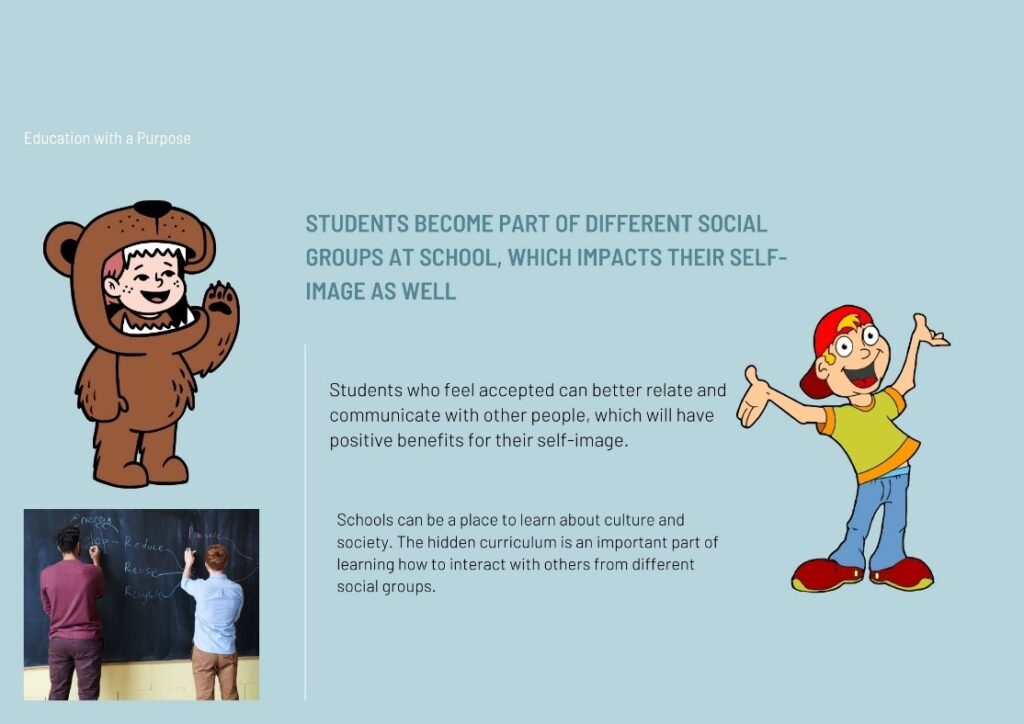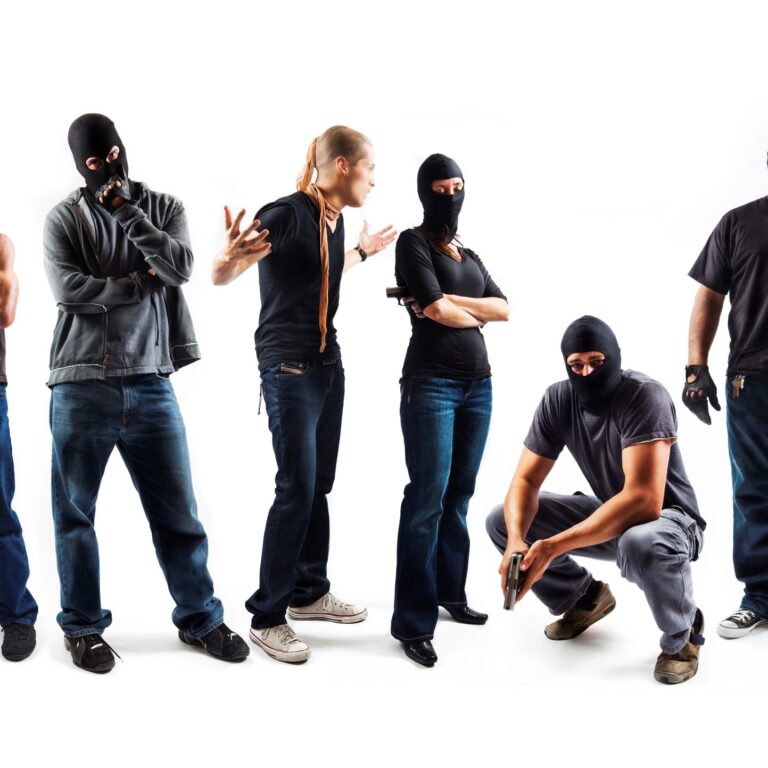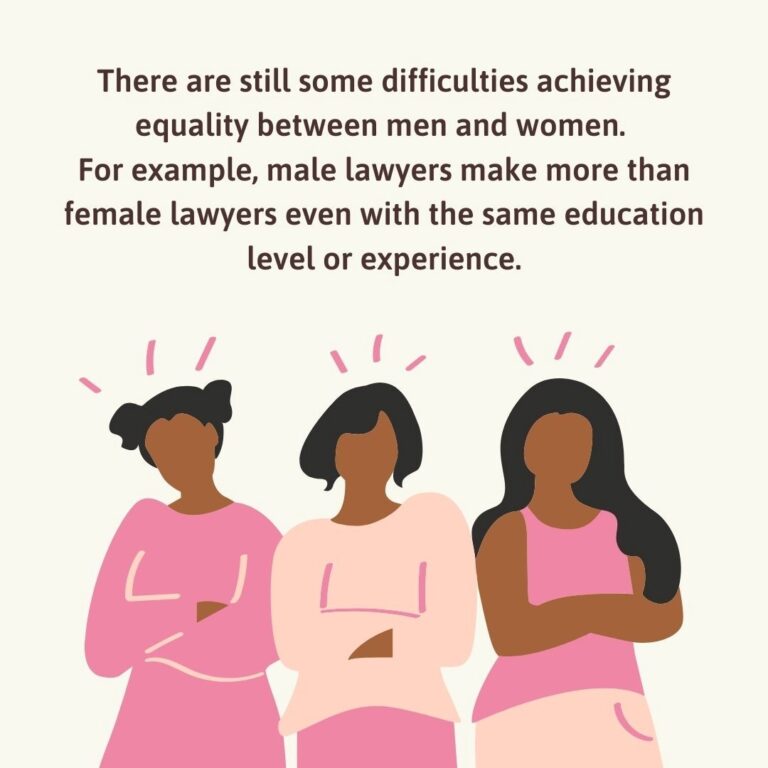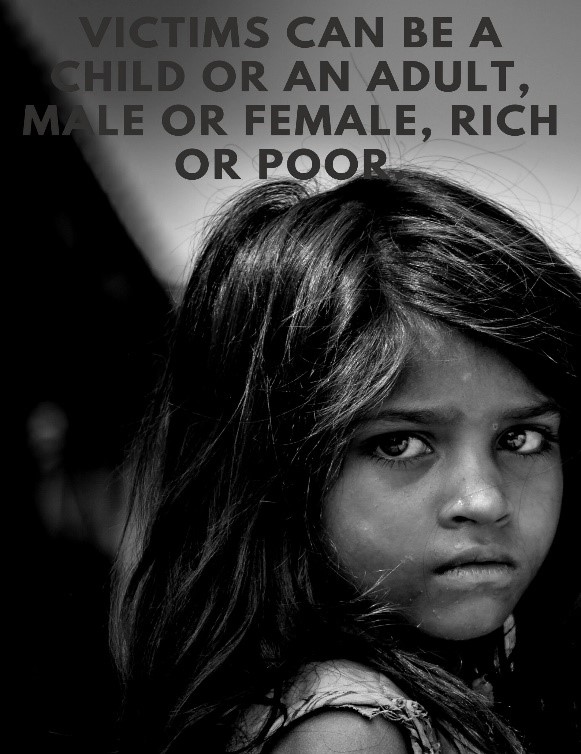Hidden Curriculum in Sociology- Criticisms, Pros, and Cons
Introduction
The sociological discipline of “hidden curriculum” refers to the implicit messages transmitted through education and socialization, such as in schools. It is often seen as a form of indoctrination into normative ethics and cultural beliefs. The hidden curriculum can be more powerful than explicit lessons because it occurs outside of conscious awareness.
The term “hidden curriculum” is used to describe the unintentional messages taught throughout a child’s educational experience. This is especially when these focus on conformity rather than individualism and competitiveness over cooperation.
What is Meant by Hidden Curriculum in Sociology?
The hidden curriculum in sociology is the learning that occurs outside of direct instruction. It includes the values, norms, and behaviors learned from observing others or being part of an organization.
What is the Impact of Hidden Curriculum?
The impact of the theory is that it allows students to gain the knowledge, skills, and attitudes they need to function in society. Students learn what conducts are acceptable and unacceptable by observing their teachers, parents, or other authority figures.
What is the Importance of Hidden Curriculum in Education?
A hidden curriculum is important in education because it allows students to learn the skills, ethics, and norms they will need later on. It also helps facilitate socialization by providing a sense of belonging and structure for children who may not have any formal training at home because their parents work or are unavailable.
What Are the Characteristics of Hidden Curriculum?
Sociologists studying hidden curriculum have been interested in the following characteristics:
•Values – The values taught by the hidden curriculum may be those of the school or classroom, but they can also come from outside sources. To gain a better understanding, it is important to consider where these values came from and how they were transmitted.
•Norms – Social norms are the expectations for behavior and conduct taught by the hidden curriculum. They help establish order in the classroom or organization but may contradict other morals held by teachers or leaders.
•Attitudes – The attitudes learned through the hidden curriculum often center on how people behave based on their gender, ethnicity, or social status. It also influences how a person views themselves and others.
•Skills – The skills obtained include basic survival skills such as reading and writing and more advanced knowledge needed in the workforce or other areas of life.
•Awareness of the Environment – Through self-reflection, it can help pupils become aware of their environment and how they fit into it. They may learn that where they live is dangerous, for example, or that a certain part of town has a reputation for poverty or violence.
How Does One Identify Hidden Curriculum?
There are a variety of ways for sociologists to identify hidden curriculum, including the following:
•In-depth interviews – By asking parents and children specific questions about their experiences, they can gain insight into how they view different parts of life. How they respond may provide clues as to what type of learning is taking place.
•Observation – By observing the daily routines of students and teachers, sociologists may be able to identify how hidden curriculum impacts learning. This might include observation of student and teacher interactions and behaviors such as note-taking or raising one’s hand before speaking in a classroom setting.
•Content analysis, or what is taught – Sociologists can look at what a particular syllabus covers. They can then compare that with the lives of students and teachers to see how well learning aligns with real-life norms.
•Ethnography – In this process, sociologists observe a specific group in their natural environment to better understand how important events and decisions have shaped them.
What Are the Advantages of Studying Hidden Curriculum?
The advantages of learning from the hidden curriculum include better grades, higher graduation rates, greater occupational mobility, and a greater understanding of the way society is organized.
The curriculum also helps students develop skills needed to interact with others, such as sitting still in the study room or following the rules.
Hidden curriculum help sociologists understand the broader picture and provide context for other research types, such as classroom ethnography. It is also easier to study hidden curriculum than to examine what happens outside the classroom or organization, such as social influence.
It also can help sociologists explore how a school or organization’s formal curriculum is affected by outside influences.


What Are the Disadvantages of Studying Hidden Curriculum?
Disadvantages come from social isolation and alienation resulting from curriculum content that conflicts with values seen at home and among peers; poor academic performance due to poor teaching and an inability to pay attention; boredom; lack of information on career choices; and feelings of helplessness.
The other disadvantage of studying a hidden curriculum is that it requires more effort than observing classroom activities.
Additionally, the information gathered may be biased because it cannot be verified through the same type of study as in-depth interviews or observation.
What Types of Research Topics Can Be Used to Study Hidden Curriculum?
There is a range of topics that can be used to examine hidden curriculum, such as the following:
•How do specific social groups learn about their roles and responsibilities within society?
•What types of knowledge are used to define the boundaries of acceptable and unacceptable behavior?
•What steps do students take after graduation when they enter the workforce?
Examples of Sociological Research on Hidden Curriculum:
There are several examples of sociological research on hidden curriculum, including studies such as these:
•In “The Making of a High School,” sociologist Annette Lareau examined the impact of race, social class, and family background on academic achievement in high school. She found that students who came from families with lower amounts of power and prestige had less access to resources and opportunities for learning.
•In “The Corporate Campus: Organizational Symbolism as Hidden Curriculum,” sociologist Diane Vaughan used content analysis to compare the amount of attention given to concepts such as competition and rivalry in business textbooks. She found that many textbook authors were critical of these concepts, but school officials encouraged students to treat them as good qualities.
•In “200 Years of Hidden Curriculum: Class, Race, and Gender in American Higher Education,” sociologist David B. Musto analyzed how the curriculum at Harvard Medical School evolved through four distinct periods and whether it included hidden teachings on race, class, and gender. He found that most of the changes in lessons reflected what was happening within society rather than a shift in these hidden teachings.
•In his book “Social Learning and Hidden Curriculum,” sociologist Jeff Howard analyzes how school uniforms are used to teach students the values and social roles of their schools. He found that schools with compulsory uniform policies valued discipline, order, and obedience more than those without them.
•In “The Hidden Curriculum: The Basic Values That Enable Americans to Enjoy Their Work,” author Mary Perotin studies the values of employees and managers in America. She found that both groups tend to believe that things like ambition, tenacity, honesty, and hard work are important for success, but they also value decision-making freedom.
How Can You Apply Sociological Knowledge Gained from Hidden Curriculum Research?
Sociology research on the hidden curriculum can be applied to everyday life by helping you gain a better understanding of how social institutions shape individuals’ behavior.
You may also be able to apply this knowledge in the workplace. For example, knowledge learned from school textbooks could help you understand what your employer expects from employees.
Finally, sociological research on hidden curriculum is relevant within the educational system. You can share your insights with teachers, administrators, and others who work in this setting to help them better understand the influence that schools have on students’ future development.
You may be interested in Labelling Theory Examples
What is the Criticism of the Hidden Curriculum Theory?
Sociologists have criticized the hidden curriculum for its focus on conformity rather than individualism, its reinforcement of gender roles, and its emphasis on competitiveness over cooperation.
These criticisms have led some sociologists, such as Gunnar Myrdal, to suggest that schools should not attempt to teach a unified body of knowledge but rather create a framework in which students can effectively learn for themselves.
Some argue that it is difficult to fully understand what is taught in schools because it depends on how people interpret the material and their personal experience (scholars call this perspective relativism). Others believe that a student’s values come from more than just school. They argue that school is part of a child’s socialization, but it isn’t the only institution contributing to this process.
Another criticism of hidden curriculum research is that Perotin touches on in her book. Many people feel uncomfortable talking about values or morals and believe they can be taught through schools (scholars call this perspective secularism). Some people feel that schools should not be involved in teaching morals to pupils and that parents should decide how their kids are raised.
What Are the 3 Types of Curriculum?
The three types of curriculum are formal, hidden, and informal.
The “formal curriculum” is what a school claims to teach. It is set up by state standards and usually taught through textbooks, lectures, tests, and projects.
The “hidden curriculum” refers to students’ learning indirectly through observation of other students and staff members and experiences they have in and out of the classroom. This type of learning is unintended by staff members, but students can pick up on themes or patterns involving functional social skills.
The “informal curriculum” refers to what students learn outside of school intentionally and unintentionally through books, the media, peers, and other sources. It is often linked to what kids are taught at home by parents and family members.
What is the Role of a Teacher in Improving Hidden Curriculum?
The teacher’s role is to be aware of the hidden curriculum and modify it. The teacher can modify their behavior and change the material they use in class. This will minimize any biases that exist and promote active, critical thinking skills among students.
This is called “shaping the hidden curriculum” or “teaching against the grain.” It means not following the typical script of society’s hidden curriculum.
Teachers can shape the hidden curriculum by collecting data from students through surveys and focus groups. These surveys will reveal how they think about social class, gender roles, and other topics that may be considered controversial. Teachers can then use the data to reshape their curriculum by modifying or eliminating any biases revealed in the study.
You may be interested in Critical Criminology
What is the Role of School in Creating a Positive Self Identity for Students?
A school is a place for students to create an identity, which usually reflects society’s attitudes and values. In schools, teachers set up a hidden curriculum that promotes healthy self-images in students by teaching them valuable social skills such as confidence, assertiveness, leadership, and teamwork.
These are important traits to have both inside and outside of school. Schools that successfully teach a positive self-image have fewer behavioral problems, lower dropout rates, and better test scores among their students.
When the hidden curriculum promotes confidence, there is also an impact on the formal curriculum because students will perform better in class when they feel good about themselves.
How Does the Hidden Curriculum Impact Students in School Sociology?
Researchers have found that students are often placed into gender roles in school without being aware of it.
Teachers can unintentionally reinforce gender stereotypes and differences. For example, teachers may call on boys more often than girls or praise the most confident student in front of their peers because she fits the role of a “leader.” Teachers can minimize the impact of this hidden curriculum by tracking and then adjusting their behavior if there is an imbalance.
The teacher who reprimands a student for using slang or improper grammar may not realize that he is also teaching students about who has the authority to speak in public spaces. Students learn important skills relating to their class position through school if it is working properly.
For example, low-income students may learn how to apply for financial aid, which will help them pay for college when the time comes. High-income students may be taught how to balance a chequebook, while low-income students are given this skill through their parents or teachers at school.
Students that do not fit into conventional social norms may develop a poor self-image in school. Some students are afraid that they will be bullied or teased and retreat into themselves. Others may become over-aggressive, like the student who throws a chair when he does not get his way, leading to further problems for him and other students. Schools can help all of their students develop positive self-images by making them feel accepted to excel in the formal curriculum.
Students become part of different social groups at school, which impacts their self-image as well. For instance, students in the middle of two cliques may feel left out when it comes time to vote for prom king or queen. Each student may feel they are better than the other, which may cause some students to leave school early or not participate in important events. Schools can help lessen the impact of cliques by allowing all students to develop a sense of belonging. This can be through activities like recognition ceremonies for positive conduct and healthy relationships between teachers and students. Teachers can also have programs that promote acceptance during lunch breaks, for instance.
Schools can be a place to learn about culture and society. The hidden curriculum is an important part of learning how to interact with others from different social groups.
Students who feel accepted can better relate and communicate with other people, which will positively benefit their self-image. Schools that successfully incorporate the hidden curriculum can help children develop the skills and personality traits that will benefit them throughout their lives.
Schools are often criticized for perpetuating the culture or status of dominant groups. For example, some critics believe that schools teach students how to be white middle-class men, making it more difficult for other social groups to succeed in society.


How Do the Hidden Curriculum Affect Students?
The hidden curriculum teaches students how to behave in society, including fitting into the dominant group and interacting with people from different social groups.
One of the most important lessons that the hidden curriculum teaches is that it may be acceptable for members of one group to treat those in other groups poorly. This means that those who have been excluded from dominant groups may learn to treat others similarly. Schools can help students become involved in different social groups and break down these stereotypes of other social groups by accepting everyone.
Schools often teach children that certain types of people belong to one group or the other, and they may reinforce this as children go on to college. This sort of exclusion is less likely to occur in an open and accepting environment regardless of their status in society. Schools can help make sure all students feel accepted by rewarding positive behavior as opposed to punishing negative behavior and providing a variety of activities throughout the day so that every student feels like they are part of
What is the Meaning of an Ideal Curriculum?
An ideal curriculum provides students with the necessary tools to learn how to interact in society. Students who are accepted and feel they belong can be more confident and easily find friends to spend time with.
The hidden curriculum teaches that some people have power while others do not, even in situations where no one should have power over anyone else. Schools can help students learn how to work together instead of against one another and teach them that they have the same rights as everyone else.
The hidden curriculum teaches children about race, gender, social class, sexual orientation, and religion in ways that are sometimes not obvious. Schools can make sure their teachers are sensitive to these differences and understand what their students are going through and protect them from discrimination of any kind.
You may be interested in Integrated Theory
What is Public Education?
Public schools provide education to all learners, regardless of their social status. These schools are funded by the government and run independently from a church or any religious organization. Schools are often run as part of the community because they may be focused on improving the area around them, and students learn different skills that will benefit them and their community as they go on in life.
Schools have a history of discrimination against certain people, including African Americans, women, gays, and the poor. Schools can help make sure students from these groups feel accepted by providing them with leadership skills to use throughout their lives. Public schools may also be more likely to provide a quality education because these schools rely on tax money, and the government has to make sure that they are using the funds properly.
Public schools have been accused of keeping religious values from being taught in the classroom. Certain conservative groups have tried to convince everyone that students should not learn about certain religions in school when this has never been the case. Students can learn about any religion they want as long as it does not take away their education.


What is an Ideal School?
To be considered an ideal school, a school will have to make sure that all students feel accepted and part of their community in the classroom and outside the classroom. A good school will make sure all students are included in the class and feel they belong no matter their social status or religious preference.
An ideal school will also have great teachers who work hard to help every student succeed and do well in the classroom and protect them from any discrimination in the community outside of school.
An ideal school will also accept parents if they want to be a part of the classroom and stay involved with their child’s education. A quality public school will welcome parents and encourage them to attend parent nights, volunteer in the classroom, or help out on field trips regardless of their social status or religious persuasion because they are all important community members.
What is the Impact of Public Education?
Public education was created to help all children in society. It has made many positive changes over the years because parents can stay involved with their child’s education instead of dropping them at school and forgetting about them until that afternoon pickup time. When parents are a part of the education process, children are more likely to succeed because they will help them reach their full potential in school.
How is This Topic Important?
Public schools are meant to provide quality education to everyone who wants one, regardless of race or economic status. All kids deserve an education that will help them reach their full potential. Public schools provide a service to the community, and all pupils should have equal access to this valuable resource.
What Are the Four Principles of the Curriculum?
The four principles of the curriculum are:
A. Include every child in the activities occurring in your classroom
B. Reinforce positive conduct whenever possible
C. Help each student accept themselves and their peers, especially when they are different from them
D. Encourage students to become involved in extracurricular activities, athletics, clubs, and other activities outside of school
You may be interested in Conflict Criminology
What is the Difference Between a School’s Official Curriculum and Its Hidden Curriculum?
The school’s official curriculum is a set of lessons or activities that the teacher plans to teach. These planned lessons are often organized in the order by which they will be taught. They may contain objectives, instruction, and evaluation criteria for each lesson. The hidden curriculum exists outside of the school’s official syllabus. It consists of all of the lessons that students learn while at school, including social lessons. The official curriculum is often well organized with clear objectives and evaluation criteria for each lesson, while the syllabus does not include these obvious characteristics.
It is important to understand what your child learns outside of class. It will help you know what things are affecting them as they grow older. E.g., your child may ask you for money to get new shoes, and if you don’t know the significance of new shoes in their peer group, they may get angry at you. Knowing what is important to them will be easier for you to understand why they want what they want.


I‘m a freelance content and SEO writer with a passion for finding the perfect combination of words to capture attention and express a message. I create catchy, SEO-friendly content for websites, blogs, articles, and social media. My experience spans many industries, including health and wellness, technology, education, business, and lifestyle. My clients appreciate my ability to craft compelling stories that engage their target audience, but also help to improve their website’s search engine rankings. I’m also an avid learner and stay up to date on the latest SEO trends. I enjoy exploring new places and reading up on the latest marketing and SEO strategies in my free time.







